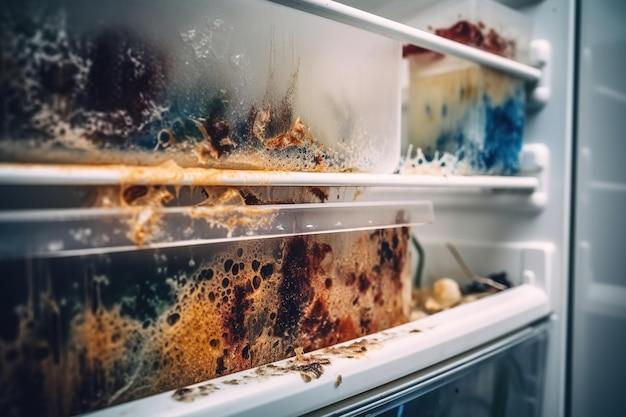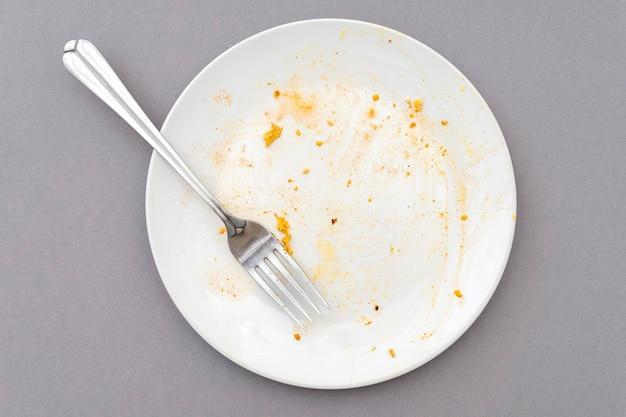It’s happened to the best of us – you open your oven with hopes of cooking a delicious meal, only to be greeted by a sight that makes your heart sink: a mouldy oven. Whether it’s due to food spills, lack of regular cleaning, or a combination of both, dealing with a mouldy oven can be a daunting task. But fear not! In this blog post, we’ll walk you through the step-by-step process of cleaning a mouldy oven and getting it back to its pristine, sparkling clean state.
Before we dive into the nitty-gritty details, let’s address a few common questions that may be lingering in your mind. Can vinegar kill mold? Is bleach more effective? What about using hydrogen peroxide? We’ll provide you with all the answers and insights you need to make an informed decision on how to tackle the mould in your oven. We’ll also explore the best oven degreasers and professional cleaning methods, so you can choose the approach that suits your needs best.
Are you ready to bid farewell to that unsightly mould and restore your oven’s former glory? Let’s get started on this oven cleaning journey together, armed with effective strategies, professional tips, and the power of knowledge.
How to Banish Mold and Freshen Up Your Oven
Keeping your oven clean is essential for maintaining a healthy cooking environment. However, sometimes life gets in the way, and your oven ends up with a moldy surprise. Fear not, because we’ve got your back with this comprehensive guide on how to clean a moldy oven. Say goodbye to those pesky spores and hello to a fresh and welcoming oven for all your culinary adventures.
1. Assess the Mold Situation
Before diving into battle with the mold, take a moment to evaluate the situation. Is it a mild case, with just a few spots here and there? Or has the mold thrown a wild party and taken over your oven in full force? Knowing the extent of the mold will help you determine the proper cleaning approach.
2. Gear Up, Soldier!
Cleaning a moldy oven is not for the faint of heart, so gear up like a true kitchen warrior. Put on some rubber gloves to protect your delicate hands from the cleansing agents, and perhaps don an epic apron to give yourself an extra boost of confidence. You’re about to show that mold who’s boss!
3. Say No to Chemical Warfare
While you might be tempted to unleash a chemical warfare on the mold, take a step back. Opt for natural cleaning solutions instead. Mix equal parts vinegar and water in a spray bottle, and you’ve got yourself a powerful mold-zapping potion without the harsh fumes. Vinegar might not smell like a bed of roses, but it’s the hero here!
4. Time to Get Scrubbing
With your trusty mold-fighting spray in hand, it’s time to get down and dirty. Spray the affected areas generously, then grab a scrub brush or sponge and scrub away that mold with a vengeance. Remember to pay extra attention to those hard-to-reach corners and crevices where mold likes to hide.
5. Bake Those Spores Into Oblivion
Now that the visible mold is defeated, it’s time to ensure it won’t come back for round two. Preheat your oven to a moderate temperature (around 375°F). This will not only help dry up any remaining moisture but also bake any lingering mold spores into oblivion. They won’t know what hit them!
6. The Finishing Touches
After your oven has had a nice bake-off with the mold, it’s time for the finishing touches. Wipe down the interior with a clean cloth or paper towel to remove any remaining residue. Take a deep breath and revel in the mold-free, fresh-scented oven you’ve restored to its former glory.
7. Prevention Is the Best Defense
To prevent future mold battles, adopt a few proactive measures. Allow your oven to fully cool down after each use, as warmth and humidity are mold’s best buddies. Regularly wipe down the interior with vinegar or a mild detergent to keep those spores at bay. A little prevention goes a long way!
A moldy oven may seem like a daunting challenge, but armed with the right techniques and a touch of humor, you can banish mold and freshen up your cooking haven. Remember, cleaning your oven isn’t just about aesthetics; it’s about creating a safe and healthy space to whip up culinary masterpieces. So gear up, grab your mold-fighting spray, and show that mold who’s boss!
FAQ: How Do You Clean a Mouldy Oven
Which is Better to Kill Mold: Vinegar or Hydrogen Peroxide
When it comes to battling mold, both vinegar and hydrogen peroxide have their strengths. Vinegar is a natural disinfectant that can help eliminate mold, while hydrogen peroxide has strong bleaching properties. For the best results, combine equal parts vinegar and hydrogen peroxide in a spray bottle, and use it to fight off that pesky mold.
Is Vinegar or Bleach Better for Killing Mold
While bleach is commonly used to kill mold, vinegar can be just as effective and is a safer alternative. Not only does vinegar eliminate mold, but it also helps prevent its regrowth. So, grab that trusty bottle of vinegar and say goodbye to moldy messes!
Can Vinegar Kill Mold
Absolutely! Vinegar is a powerful mold killer that can tackle even the toughest mold infestations. Its acidic properties make it a natural enemy of mold. So, if you’re dealing with a moldy oven, grab a bottle of vinegar and get cleaning!
What is the Best Oven Degreaser
When it comes to tackling oven grease, there are several great options out there. One top-notch oven degreaser to consider is a mixture of baking soda and vinegar. This dynamic duo can cut through stubborn grease and leave your oven sparkling clean.
What Do Professionals Clean Ovens With
Professional oven cleaners often use a combination of powerful degreasers, such as commercial oven cleaners, along with handy tools like scrapers and brushes. These experts know the ins and outs of oven cleaning, ensuring a thorough and effective job.
Can Mold Grow in Ovens
Mold can grow in any warm and damp environment, and unfortunately, ovens can be a perfect breeding ground. The combination of food particles, moisture, and warmth creates an ideal habitat for mold. That’s why it’s crucial to regularly clean and maintain your oven to keep mold at bay.
Will Heat Kill Moldy Food
Yes, heat can kill moldy food. When you cook food at high temperatures, most molds will perish, leaving you with a safe and edible meal. However, keep in mind that the heat can’t remove any toxins or allergens produced by the mold, so it’s always best to discard any moldy food.
How Do I Get Rid of Mold in My Oven
To banish mold from your oven, follow these simple steps:
- Mix equal parts vinegar and hydrogen peroxide in a spray bottle.
- Spray the solution onto the moldy areas of your oven.
- Let it sit for a few minutes to penetrate the mold.
- Scrub the affected areas with a sponge or scrub brush.
- Rinse thoroughly with water and dry the oven.
Can Hot Water Kill Mold
Hot water alone may not be enough to fully eliminate mold. While hot water can help loosen the grip of mold, it’s best to use a combination of hot water and a mold-killing agent like vinegar or hydrogen peroxide for more effective results.
Which is Better: Vinegar or Bleach
When it comes down to vinegar versus bleach, both have their advantages. Vinegar is a natural and safer option, whereas bleach is a powerful disinfectant. Ultimately, it depends on your specific needs and preferences. But why not choose vinegar? It’s an eco-friendly way to fight mold and keep your oven squeaky clean.
Does Dry Heat Kill Mold
Dry heat, such as the heat produced by an oven, can indeed kill mold. When you crank up the temperature, mold spores won’t be able to withstand the high heat. So, if you suspect mold growth in your oven, turn up the heat and let it work its magic!
How Do You Clean a Badly Stained Oven
To tackle a badly stained oven, follow these steps:
- Create a paste by mixing baking soda and water to a thick consistency.
- Spread the paste over the stained areas of your oven.
- Let it sit for at least 30 minutes, or overnight for tough stains.
- Wipe away the paste using a damp cloth or sponge.
- Rinse thoroughly and dry your oven.
At What Temperature Does Mold Die
Mold begins to die off at temperatures above 140°F (60°C). So, if you suspect mold in your oven, set the temperature above this threshold and let the heat gradually eliminate the unwanted fungi.
How Do You Get Burnt-on Grease out of the Oven
Removing burnt-on grease from your oven requires some elbow grease, but it’s worth the effort. Here’s how to do it:
- Make a paste of baking soda and water.
- Apply the paste to the burnt-on grease.
- Let it sit for a few hours or overnight.
- Scrub the affected areas with a sponge or scrub brush.
- Rinse with water and wipe dry.
Can You Kill Mold in the Oven
Yes, you can definitely kill mold in your oven. By using powerful mold-fighting agents like vinegar or hydrogen peroxide, paired with a thorough cleaning regimen, you can banish mold from your oven and enjoy worry-free cooking.
Does Cold Temperature Kill Mold
Cold temperatures alone are not effective at killing mold. Mold can become dormant in colder environments, but it can revive and regenerate once the conditions become warmer and more conducive for its growth. To effectively eradicate mold, it’s best to use mold-killing agents and proper cleaning techniques.
Does Fungus Die in the Oven
Yes, if you encounter fungus in your oven, fear not! Putting it on the heat is one surefire way to eliminate it. The high temperatures inside the oven will cause the fungus to wither away and bid farewell, leaving you with a fungus-free cooking space.
What Mold Does Vinegar Not Kill
While vinegar is a formidable mold killer, it may struggle to tackle certain types of mold, such as black mold. Black mold requires more aggressive remediation methods, and it’s best to consult professionals in such cases. Remember, prevention is key, so regular cleaning and maintenance can help prevent mold growth in the first place.
Now that you have all the answers to your burning questions, it’s time to roll up your sleeves and get that mouldy oven back in tip-top shape. Happy cleaning!

